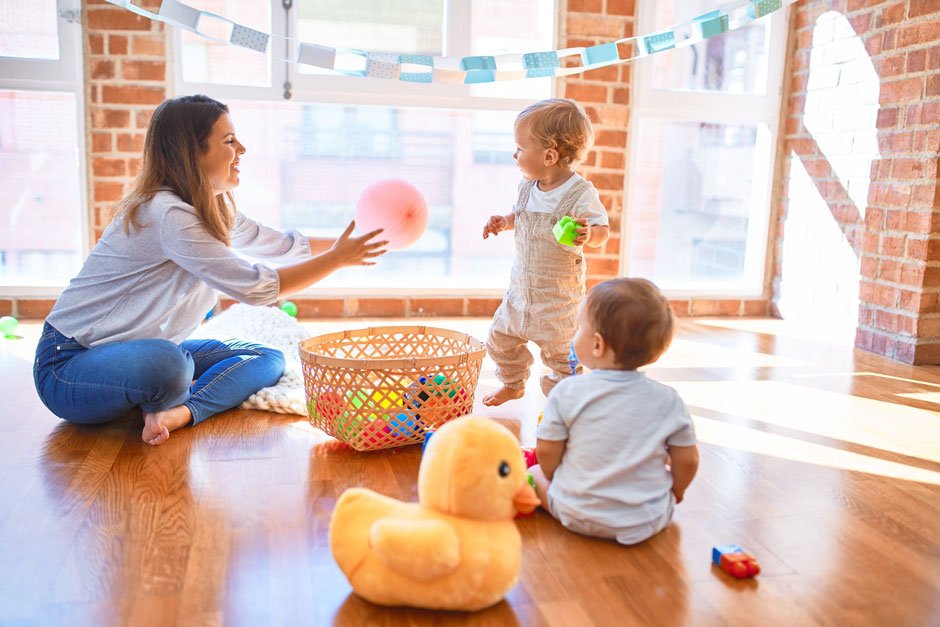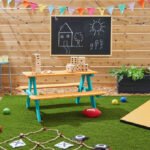Therapy for kids’ speech delay through play creates positive associations with communication, making children more likely to participate actively in conversations. Parents and caregivers can incorporate simple, engaging activities into daily routines to support their child’s progress in speech therapy for kids. These activities work best when practiced consistently for 30 minutes to an hour each day in a distraction-free environment.
This material is for informational purposes only. Do not rely on it as medical advice—consult a healthcare professional instead.
Key Takeaways
- Playful activities enhance speech development through natural, engaging interactions
- Daily practice of speech activities for 30-60 minutes supports optimal progress
- Consistent parent involvement in therapy for kids’ speech delay strengthens communication skills
Foundations of Speech and Language Development
Speech and language development follows predictable patterns from birth through early childhood, with each stage building crucial communication abilities and social connections.
Understanding Speech Delays in Children
Speech delays affect 5-10% of preschool-aged children in Canada. Early intervention is vital for addressing these challenges effectively.
A child’s speech development typically begins with cooing and babbling at 2-3 months, followed by first words around 12 months. By age 2, most children use 50+ words and form basic two-word phrases.
Common causes of speech delays include:
- Hearing impairments
- Neurological conditions
- Developmental disorders
- Environmental factors
Role of Parents and Caregivers
Parents play a crucial role in fostering speech development through daily interactions. Simple activities create valuable learning opportunities.
Key strategies for supporting speech:
- Respond positively to babbling and speech attempts
- Use clear, age-appropriate language
- Read books together daily
- Engage in face-to-face conversations
- Create opportunities for social interaction
Consistency in communication helps children develop strong language foundations. Regular exposure to language through play, songs, and everyday activities strengthens speech skills.
Recognizing the Signs of a Speech Delay
Children develop at different rates, but specific milestones help identify potential delays.
Red flags by age:
- 12 months: No babbling or gestures
- 18 months: Prefers gestures over vocalization
- 24 months: Limited vocabulary (fewer than 50 words)
- 36 months: Unclear speech, limited sentences
Early warning signs include:
- Limited eye contact
- Difficulty following simple instructions
- Lack of interest in social interaction
- Frustration when trying to communicate
Consulting a speech-language pathologist is recommended if these signs persist.
Interactive Play for Enhancing Speech
Play-based activities create natural opportunities for children to develop speech and language skills through engaging, pressure-free interactions. Interactive games and activities help kids learn essential communication skills while having fun.
Engaging Through Music and Movement
Children respond instinctively to rhythm and melody. Simple nursery rhymes build phonological awareness and vocabulary through repetition of sounds and words.
Movement songs like “Head, Shoulders, Knees and Toes” teach body parts while encouraging physical activity and vocal participation.
Musical instruments provide opportunities to practice turn-taking and timing. Shakers, drums, and bells let children explore different sounds while developing rhythm and coordination.
Songs with actions help children connect words to movements, reinforcing language learning through multiple senses.
Creating Opportunities with Reading and Storytelling
Picture books offer rich vocabulary exposure and chances to practice new words. Parents should point to images while reading, encouraging children to name objects and characters.
Interactive stories that invite participation work especially well. Books with repetitive phrases let children join in predictable parts.
Reading the same books multiple times helps children master new vocabulary and grammar patterns. They begin recognizing familiar words and sentence structures.
Incorporating Sign Language and Gestures
Basic signs for common words give children a way to communicate before they can speak clearly. Start with simple signs for “more,” “all done,” and “help.”
Pairing spoken words with gestures reinforces meaning and encourages expression. Children often find it easier to combine gestures with speech attempts.
Signs reduce frustration during the early stages of speech development. They serve as a bridge to verbal communication.
Speech Therapy Activities at Home
Daily routines provide natural opportunities for language practice:
- Mealtime conversations about food
- Bath time naming of body parts and actions
- Getting dressed while discussing clothing items
Simple games encourage speech:
- Simon Says for following directions
- I Spy for describing objects
- Memory matching for vocabulary practice
Parents should respond positively to all communication attempts, whether through words, sounds, or gestures. This builds confidence and motivation to keep trying.
Fun Play Activities to Boost Speech Skills in Kids with Delayed Talking
For children with delayed speech, play is one of the most effective ways to encourage language development. Engaging, interactive activities help build vocabulary, improve articulation, and boost confidence in communication. The key is to create a fun, pressure-free environment where kids feel motivated to express themselves through sounds, words, and gestures.
Here are five fun activities to support speech development:
- Bubble Blowing and Popping Words – Encourages vocalization as kids request bubbles and pop them while saying simple sounds or words.
- Toy Animal Sounds Game – Helps with sound imitation by making different animal noises and encouraging kids to repeat them.
- Musical Freeze Dance – Encourages verbal interaction by pausing music and asking kids to name actions, body parts, or feelings.
- Treasure Hunt with Clues – Builds vocabulary by guiding kids to find objects based on descriptive words and phrases.
- Puppet Conversations – Creates a playful, low-pressure way to practice conversational turn-taking and expressive language skills.
Conclusion
Speech development thrives through engaging play activities that combine learning with enjoyment. Parents and caregivers play a crucial role in implementing these activities as part of daily routines.
Regular practice of interactive games, songs, and playful exercises creates natural opportunities for children to develop their communication skills. These activities build confidence while strengthening vocabulary, pronunciation, and social interaction abilities.
The journey of speech development becomes more effective when children feel supported in a relaxed, fun environment. With consistency and patience, these play-based activities can make a meaningful difference in a child’s ability to communicate clearly.






Leave a Reply